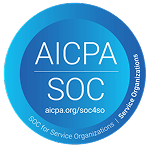FAQs
 How do U.S. student loan expense coverage policies differ from typical Indian education loans?
How do U.S. student loan expense coverage policies differ from typical Indian education loans?
Indian bank education loans typically restrict usage to tuition fees and sometimes housing costs, while U.S. student loans offer broader coverage for living expenses, technology purchases, travel and personal needs. Many Indian loans require proof of expenses through direct payments to institutions, while U.S. loans often provide excess funds directly to students for discretionary educational spending. Additionally, U.S. student loans specifically calculate a “cost of attendance” figure that includes reasonable living expenses, while Indian banks focus primarily on institutional fees.
 What specific travel expenses can Indian students cover with U.S. student loans?
What specific travel expenses can Indian students cover with U.S. student loans?
Typically Indian students can use loan funds for various travel expenses including public transportation passes (typically US$50-US$100 or INR4,150-8,300 monthly), rideshare services for off-campus transportation, flights to India during academic breaks (approximately US$800-US$1,500 or INR66,600-1,25,000 round-trip) and airport transfers. Some loans also cover reasonable costs for academic field trips, conferences or research travel directly related to your programme of study.
 How can Indian students effectively budget loan funds for living expenses in expensive U.S. cities?
How can Indian students effectively budget loan funds for living expenses in expensive U.S. cities?
Create a detailed monthly budget allocating specific amounts for housing (typically 30-40% of expenses), food (US$300-US$500 or INR25,000-41,600 monthly), utilities, transportation and personal costs. Consider sharing accommodations with other Indian students to reduce housing costs, cook meals rather than eating out and use student discounts available with your university ID. Most importantly, track all expenses using budgeting apps to ensure you’re not depleting loan funds too quickly, as exchange rate fluctuations can significantly impact the relative value of your loan when converted from rupees.
 What technology purchases are considered legitimate educational expenses for Indian students?
What technology purchases are considered legitimate educational expenses for Indian students?
Indian students can typically use loan funds for essential technology, including a laptop computer (US$800-US$1,500 or INR66,600-1,25,000), required software for your specific field of study (such as statistical packages, design software or programming tools), a smartphone if needed for academic applications and printing costs. Focus on purchasing equipment with longer lifespans that will serve throughout your academic programme rather than requiring frequent upgrades.
 How should Indian students handle excess loan funds to maximize their financial well-being?
How should Indian students handle excess loan funds to maximize their financial well-being?
If you receive more funds than immediately needed, consider placing the excess in a high-yield savings account to earn interest while maintaining accessibility. Never use excess funds for non-educational investments, lending to others or luxury purchases as this may violate loan terms. Create an emergency fund covering two to three months of expenses to handle unexpected costs without additional borrowing. Consider making interest payments while still in school if possible, as this can significantly reduce your total loan cost over time.
